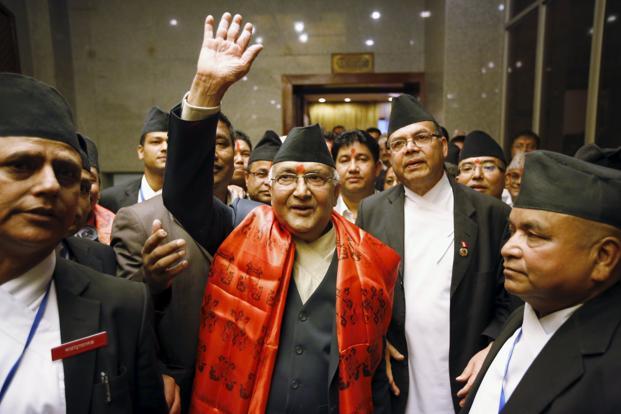
(TibetanReview.net, Feb21, 2018) – True to his reputation of being more pro-China than India, Nepal’s new communist Prime Minister Khadga Prasad Sharma Oli has said he will restart a Chinese-led US$2.5 billion hydropower project that was pulled by the previous government and wants to increase infrastructure connectivity with Beijing to ease the country’s reliance on New Delhi, reported scmp.com Feb 19.
He is also reported to want to “update” relations with India “in keeping with the times” and to favour a review of all special provisions of Indo-Nepal relations, including the long-established practice of Nepalese soldiers serving in India’s armed forces.
“Political prejudice or pressure from rival companies may have been instrumental in scrapping of the project. But for us, hydropower is a main focus and come what may, we will revive the Budhi Gandaki project,” the Communist Party of Nepal (Unified Marxist-Leninist, or UML) leader was quoted as saying to the This Week in Asia in an exclusive interview, his first since taking office on Feb 15.
The contract to build a dam on the Budhi Gandaki river in central-western Nepal was awarded last June to China’s Gezhouba Group by a government headed by Communist Party of Nepal (Maoist Centre) leader Pushpa Kamal Dahal, as part of China’s “Belt and Road Initiative” that Nepal had joined the previous month. However, the next prime minister, from the Nepali Congress, scrapped the project, in a move seen as a concession to pressure from India.
Since then, Oli’s UML and the Maoist Centre that formed the Left alliance swept to power in a landmark election, Nepal’s first after the promulgation of its new constitution which restructured the Himalayan country as a federal republic.
The two communist parties are also inching towards a merger, which China has always advocated.
However, landlocked Nepal has a long way to go to reduce its reliance on India. Almost all of its petroleum is imported from India. Its trade deficit with India stood at around US$6 billion in the last financial year (July 15, 2016 to July 15, 2017). And trade deficit with India constitutes about 80 per cent of Nepal’s overall deficit.
“Our petroleum usage has been increasing but we import all of it. We urgently need to develop hydropower to reduce our dependence on petroleum,” Oli was quoted as saying.
Oli had a running feud with India. He blamed New Delhi for engineering his government’s fall in Aug 2016. As prime minister between 2015 and 2016, he faced India’s criticism of Nepal’s new constitution on the ground that it discriminated against people of the southern plains of Nepal adjoining India who are of Indian ancestry.
When India was seen as having retaliated with a crippling blockade of the landlocked country, Oli reached out to China to try to overcome the crisis and inked several vital agreements. He later cancelled a visit by Nepal’s president to India and recalled the Nepalese ambassador to the country, considered a rare act of defiance of India.
In the recent election, Oli successfully tapped the groundswell of anti-India sentiment in Nepal as a result of the blockade, lacing his stump speeches with rhetoric against India that fetched his party 121 seats in the 275-member Parliament, the scmp.com report noted.
Oli sees infrastructure development as an important means to narrow the distance with China, whose physical remoteness, compared with next-door India, is a hindrance to deeper Sino-Nepal relations. “Once China brings its rail network up to Shigatse and then Kyirong in Tibet, it should be easy to extend it to Nepal. Its lower altitude than Tibet, and the terrain is actually sloping all the way down from Kyirong. Apart from that, three roads are under construction connecting China and Nepal, which should be ready in a couple of years. If we can connect this railway network to our east-west rail project, it can revolutionise China-India trade, with Nepal in the middle” the report quoted him as saying.
Nevertheless, India and Nepal share deep historical and cultural bonds, apart from an open border that allows millions to freely work and travel in each other’s territory. More than 25,000 Nepalese serve in the Indian Army and another 20,000 Nepalese are in Indian paramilitary and police forces, an arrangement that offends some in Nepal.





